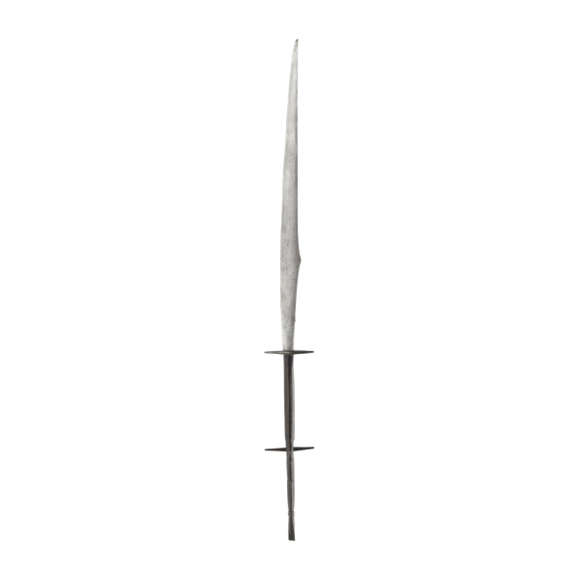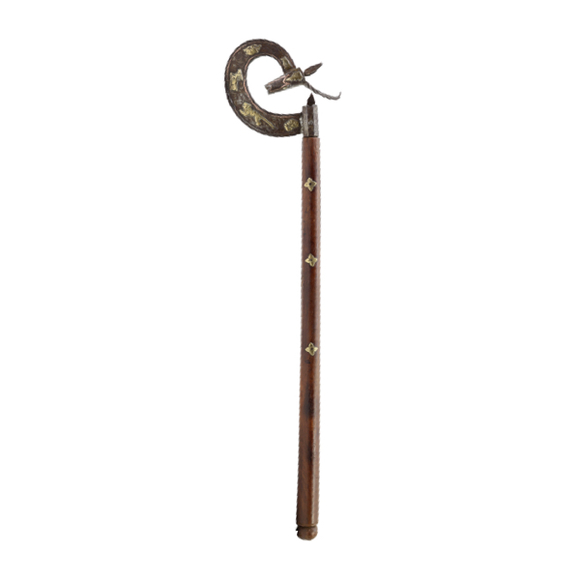The hilt is in the typical Marwari Rajput style, made by Ram Namar in 1857 A.D.

91.5 cm / 36 inch
81 cm / 31.9 inch
forte 6 mm
middle 5 mm
near tip 2.5 mm
forte 39.5 mm
middle 35 mm
near tip 25 mm
957 grams
24 cm from center of cross
North India
Wootz steel, pattern welded steel, gold, resin.
Scabbard: wood, leather, iron, gold.
Belt: leather, cotton, silk, silver.
Probably 19th century.
Introduction
The talwar or talvār (Hindi) is the archetypical saber of India. Like the swords of most culture, they were carried both as weapons and status symbols and in some cases the sword could even be sent to represent its owner.
They have curved blades and characteristic hilts with large disc pommel and two quillons. The hilt is meant to restrain the wrist into a very secure grip, limiting the ability to stretch the saber out for longer percussive strikes, instead optimizing its use for deep and powerful draw cuts up-close.
Description
A nice Indian talwar with heavy, pattern welded “damascus” steel blade. In recent polish, showcasing its pattern consisting of a multitude of dots and watery lines. The deeply curved blade with long, well-defined backedge. At just over 950 grams, it is a hefty piece that was not only made for show. There is a stamped marking at the base of the blade showing a trident, which possibly attributes the piece to the Maratha, who marked their swords with tridents in honor of Durgā, the warrior goddess.
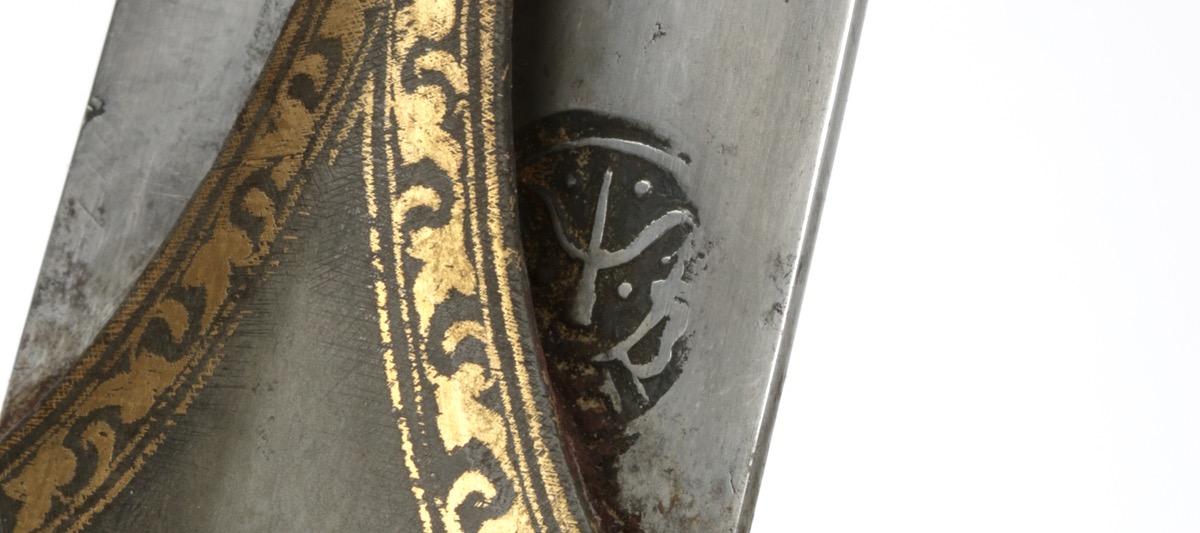
Maratha trident marking on the base of the blade.
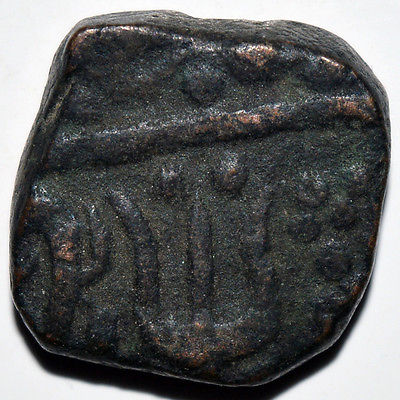
A near identical marking on a coin minted by the Maratha Independent Kingdom which lasted from 1674 to 1818.
The hilt, of typical form, is made entirely of wootz steel, visible through polished windows on both sides of guard, handle, and disc pommel. The handle is of elegant facetted shape. The borders of the windows that showcase the wootz are decorated with gold koftgari all around. There is some minor play in the pommel.
It comes in its original wooden scabbard covered with black leather. Both iron scabbard mounts still present and in very good condition still with thick gold koftgari decoration. The upper piece sits tightly between two ribs in the worked leather of the scabbard, confirming it's been there since the scabbard was made. The endpiece also shows convincing signs of age under magnification. It also comes with a belt attached, made of cotton and silver-wound threads. The suspension system includes a strap to go around the guard to prevent the sword from sliding out of the scabbard. It's very rare to find a talwar complete with belt and securing strap.
Conclusion
A good heavy talwar with substantial pattern welded blade and wootz handle, decorated with gold. The blade markings suggest it is attributable to the Marathas. It is unusually complete, with original scabbard and belt.







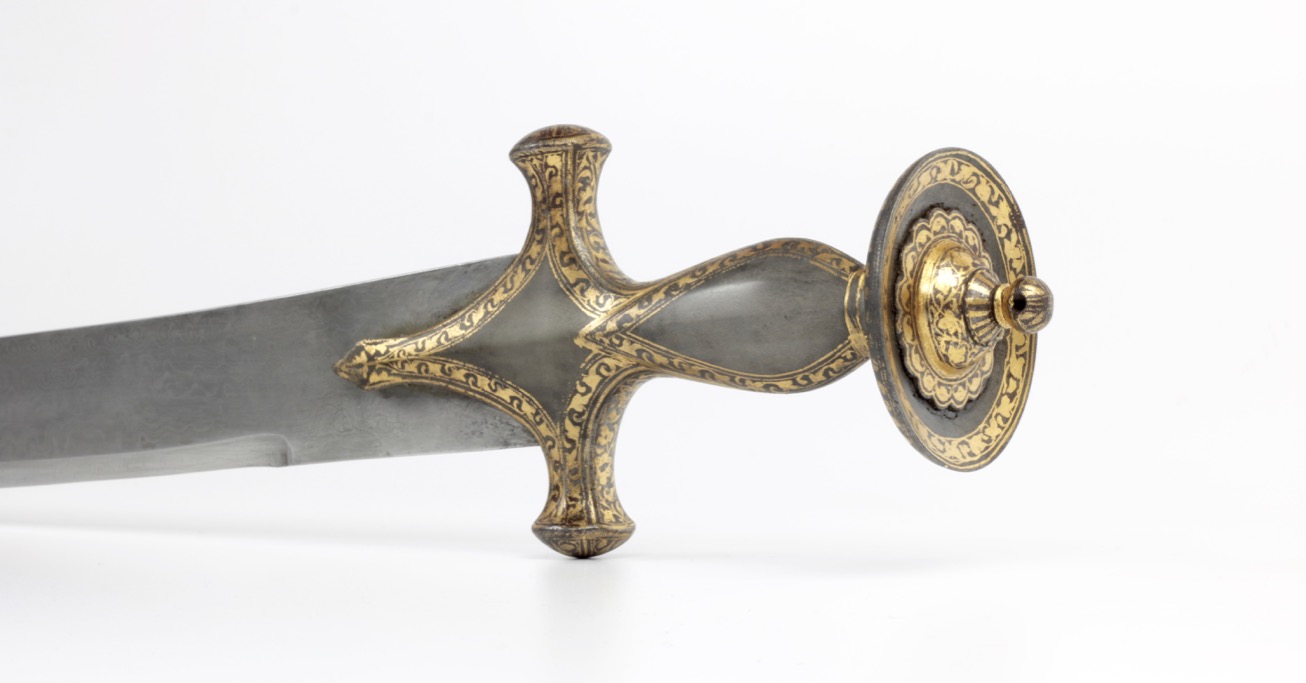








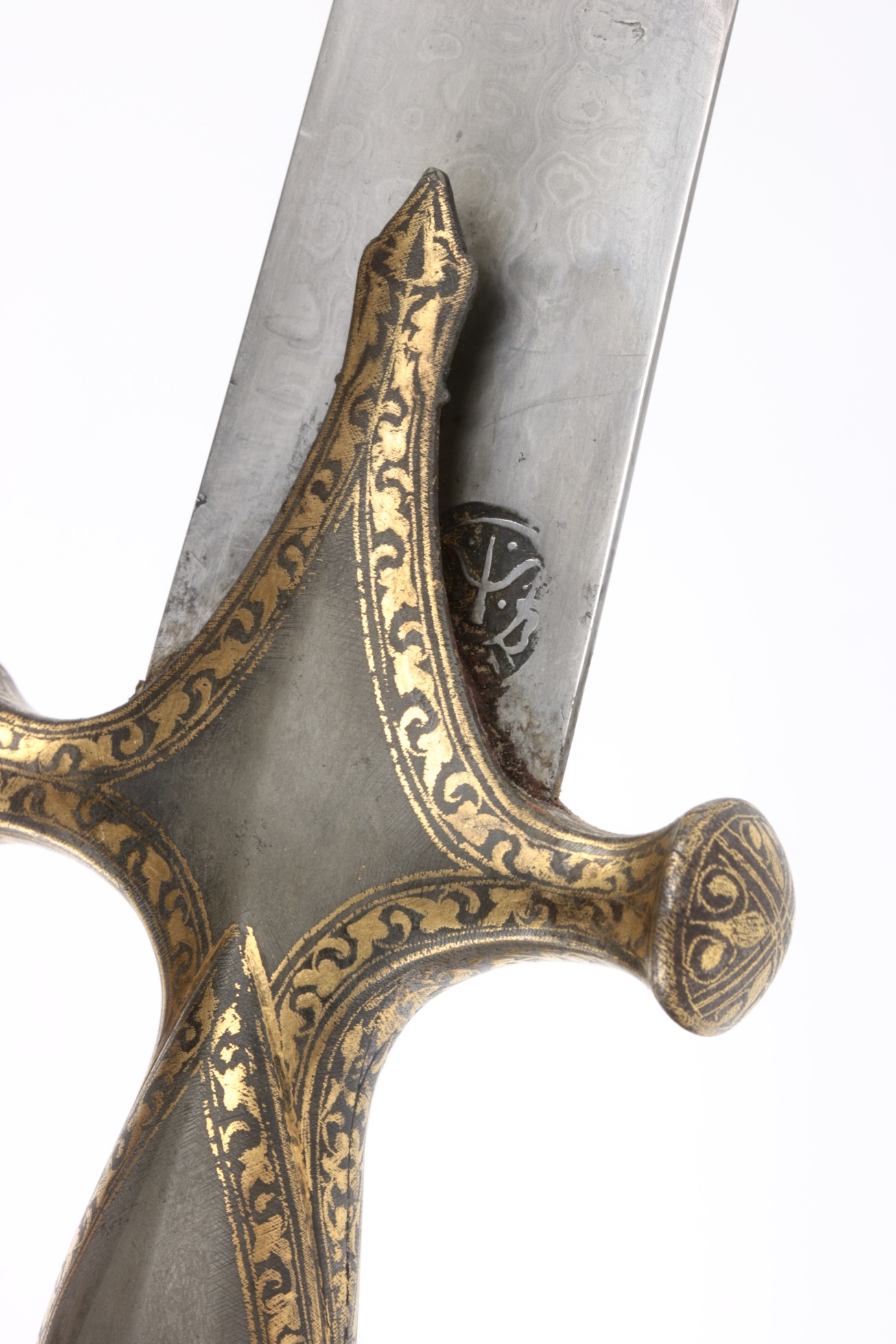
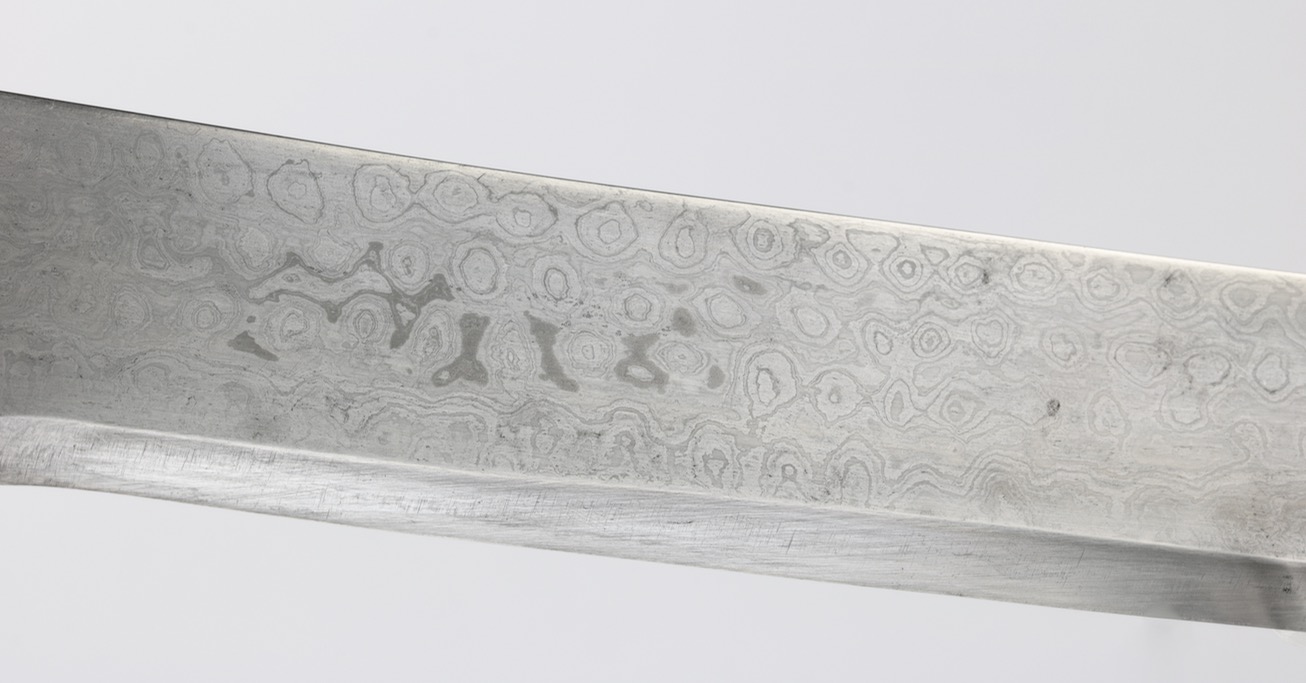
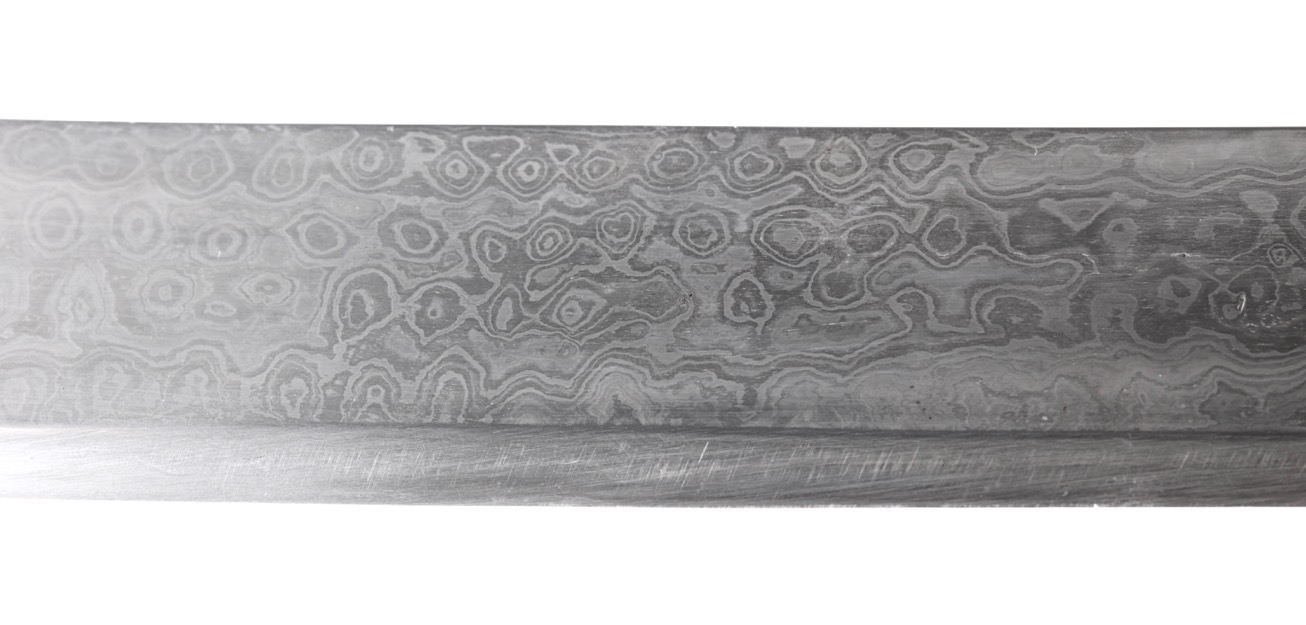
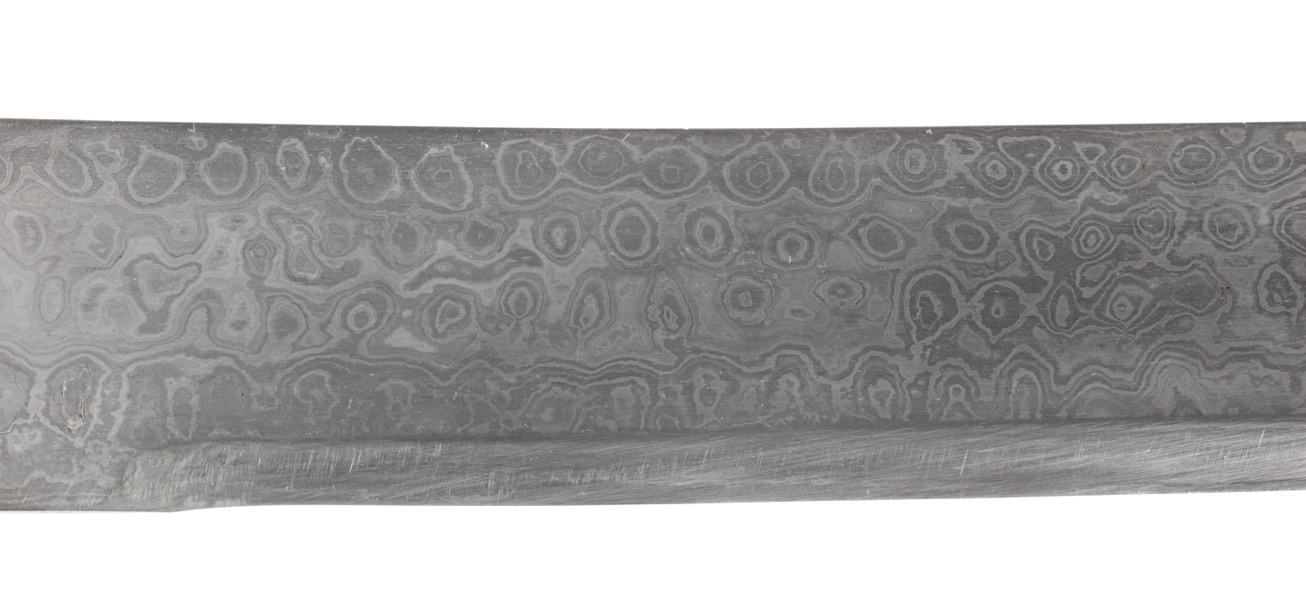
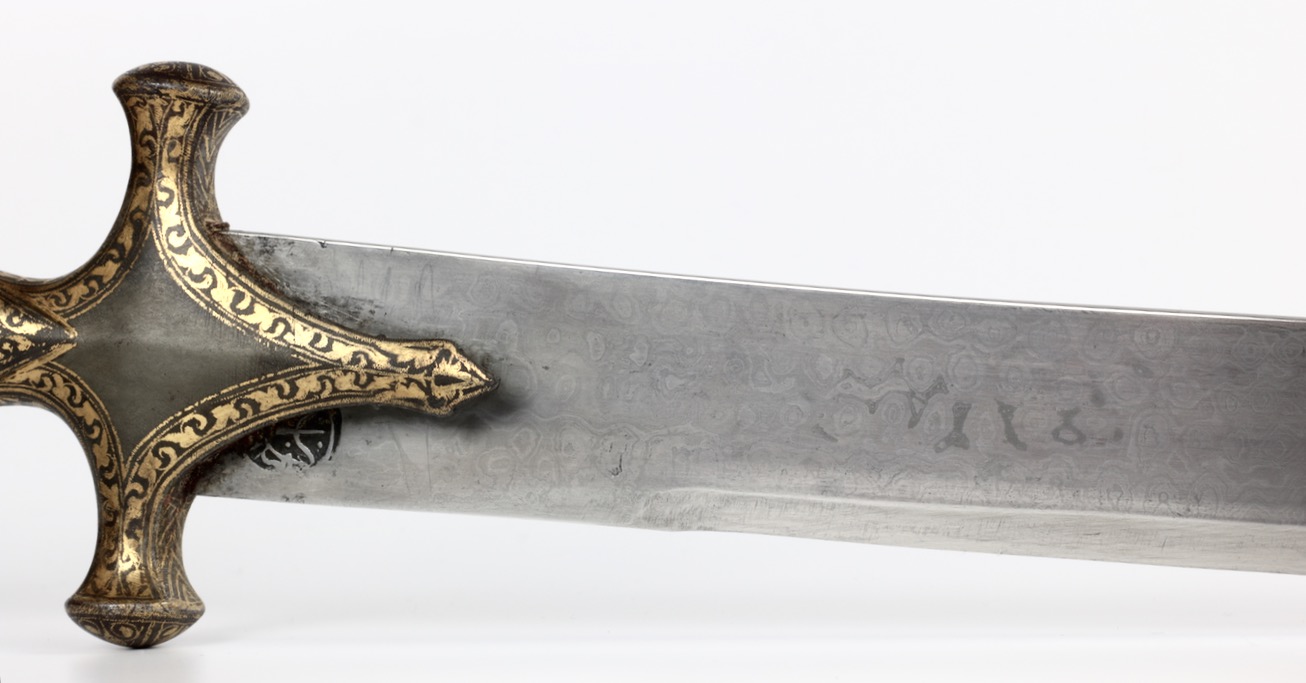


This fitting sits snugly between two undamaged ribs in the old scabbard's leatherwork, confirming it has been in place for a long time.


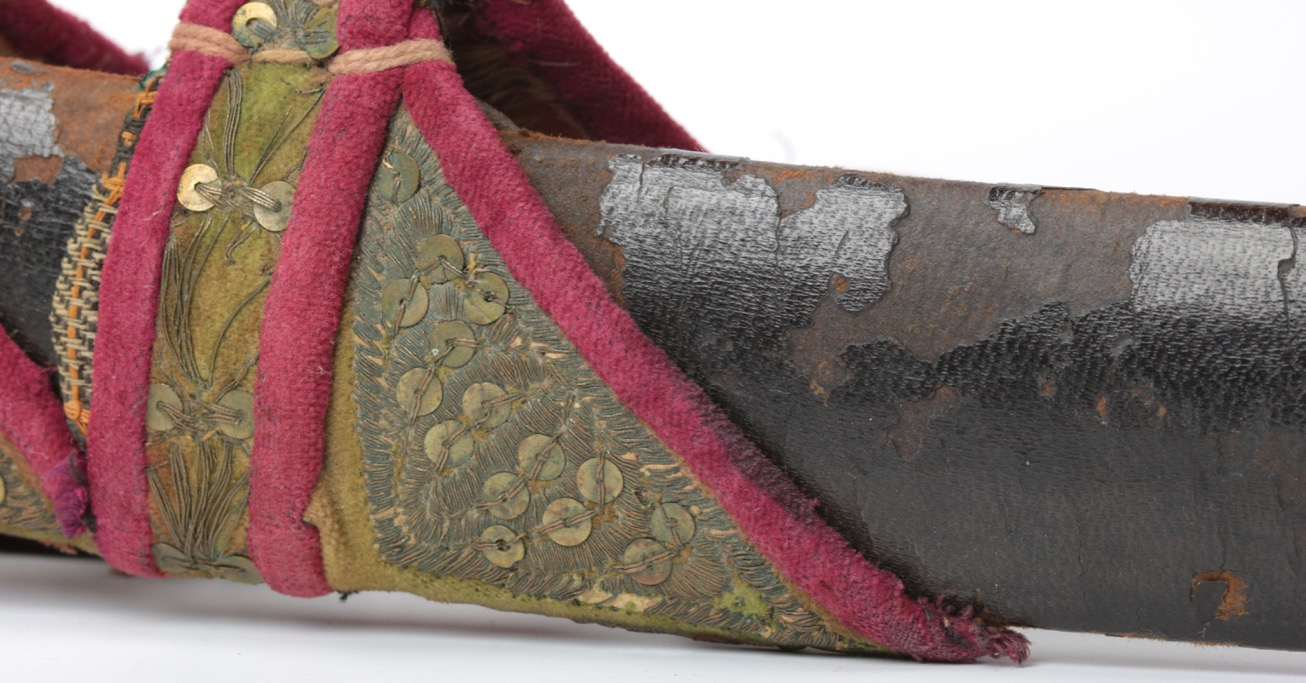
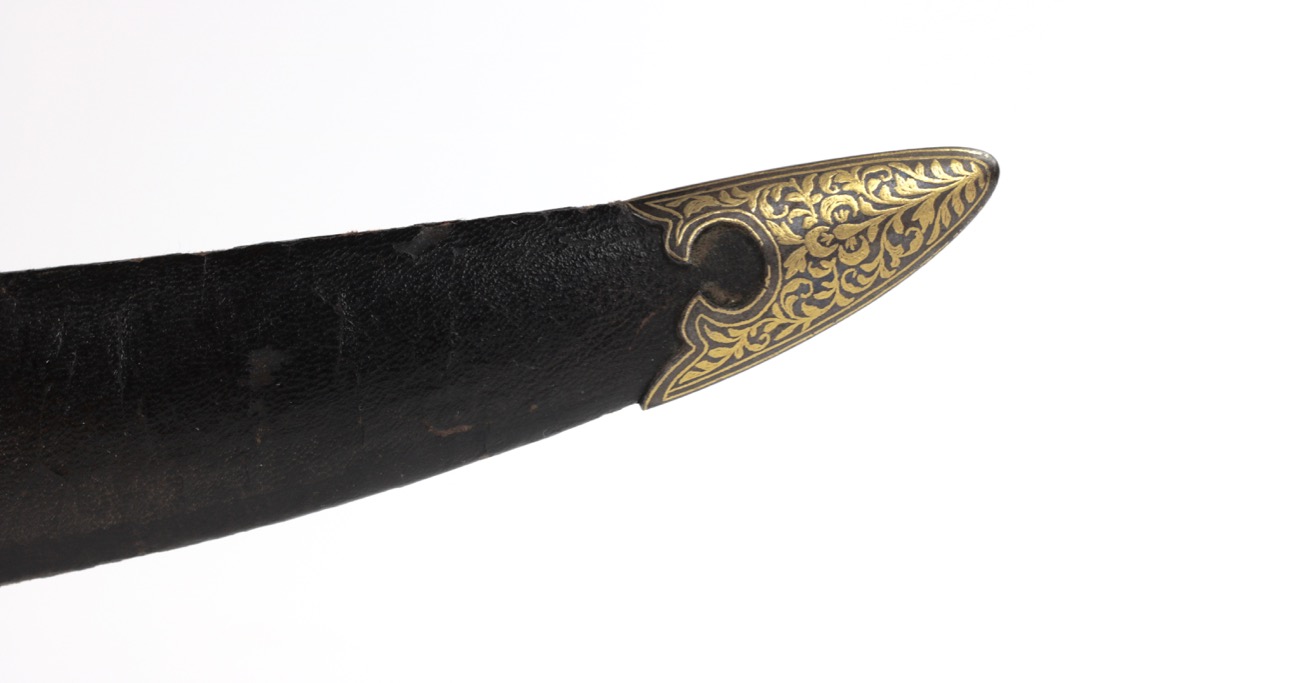

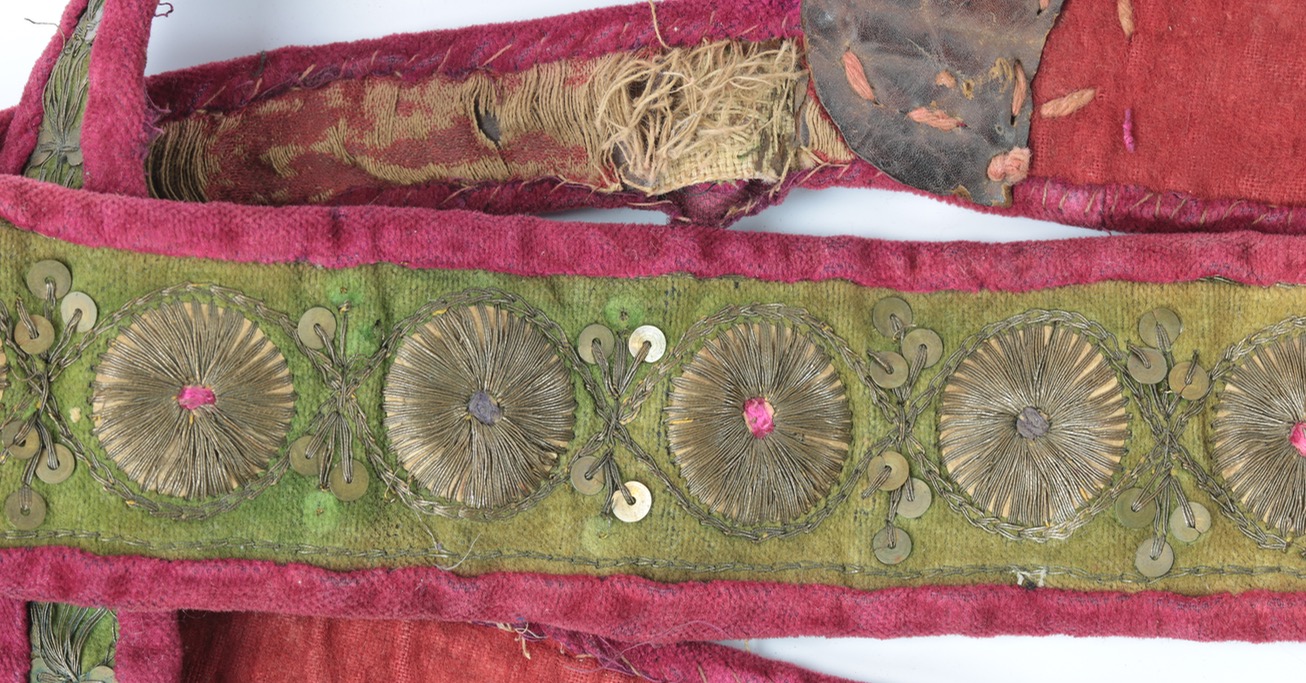



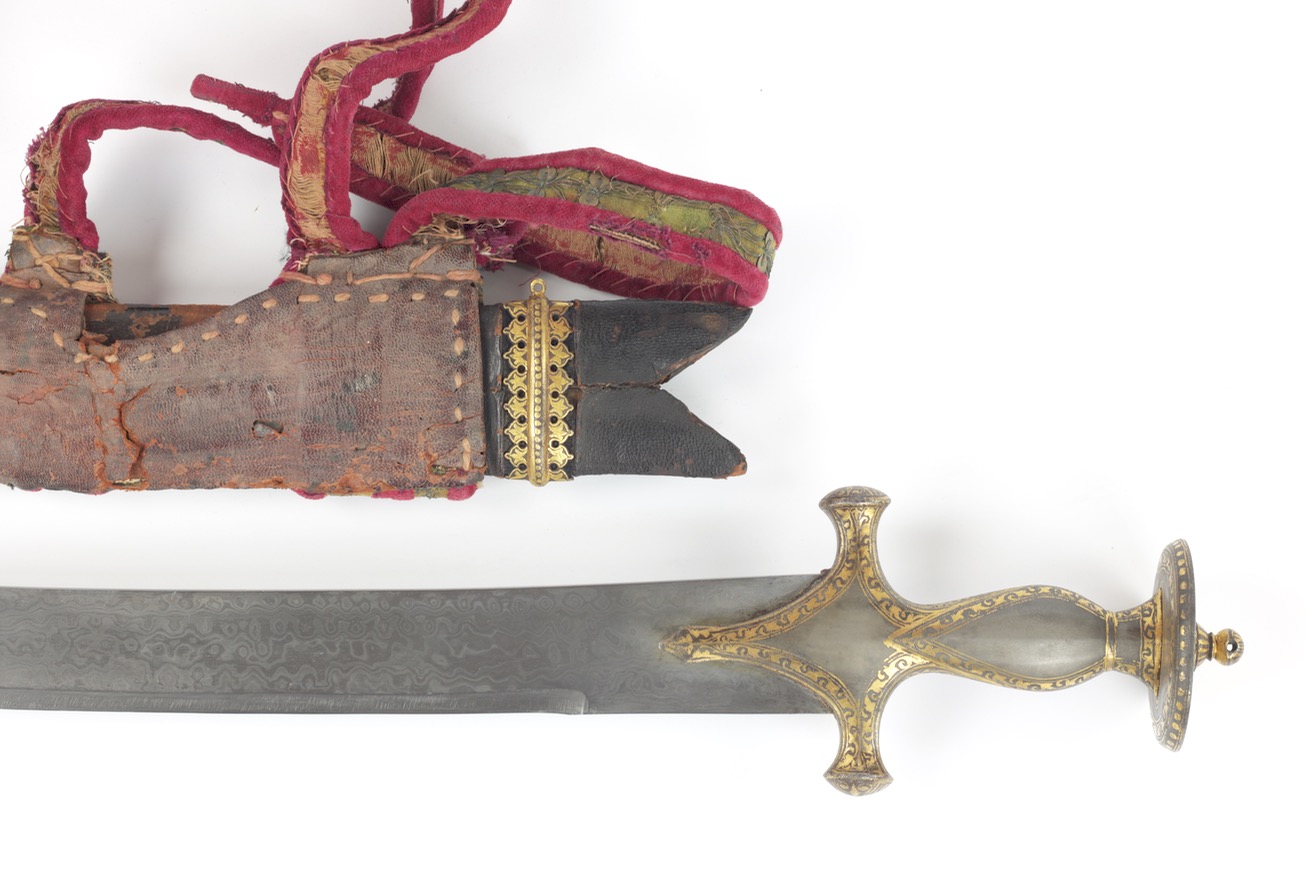

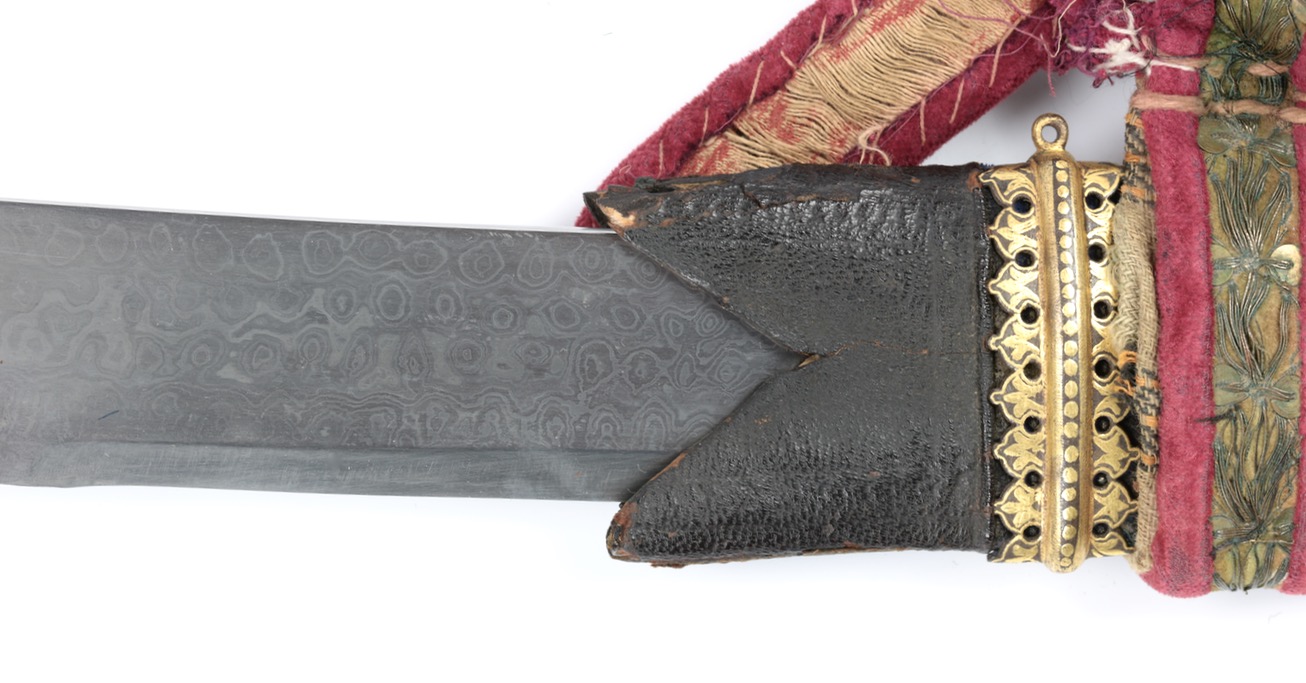





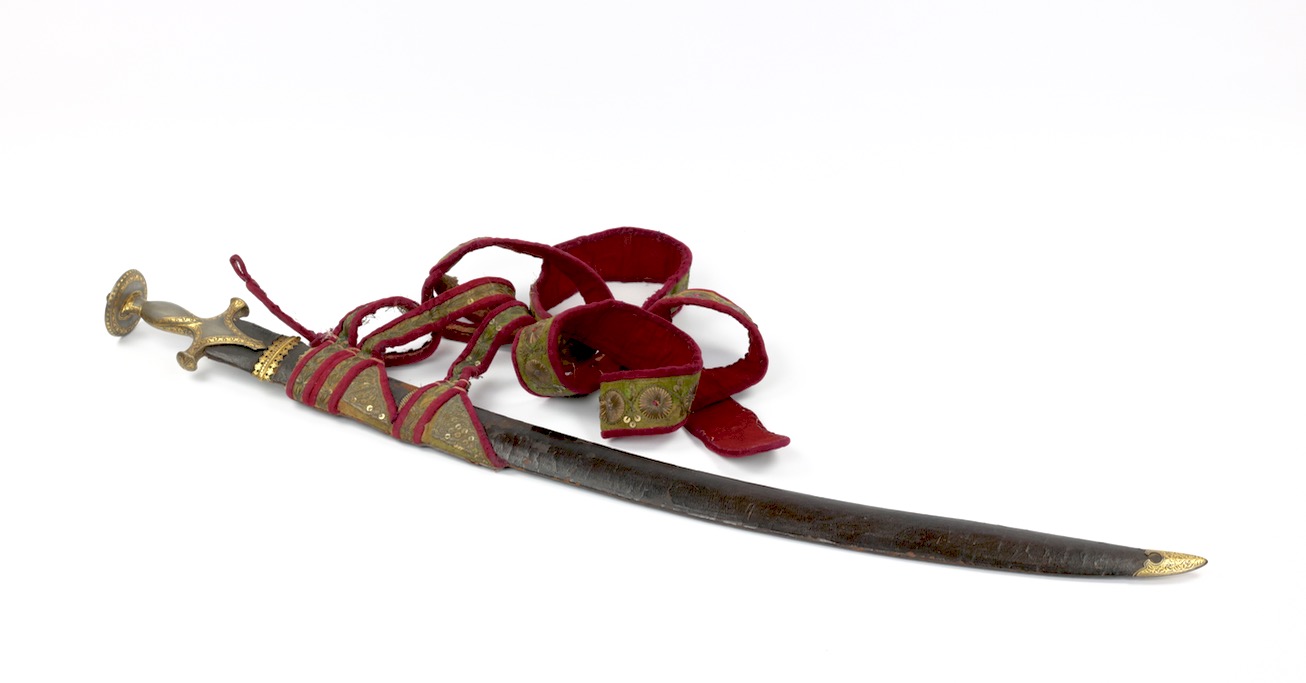
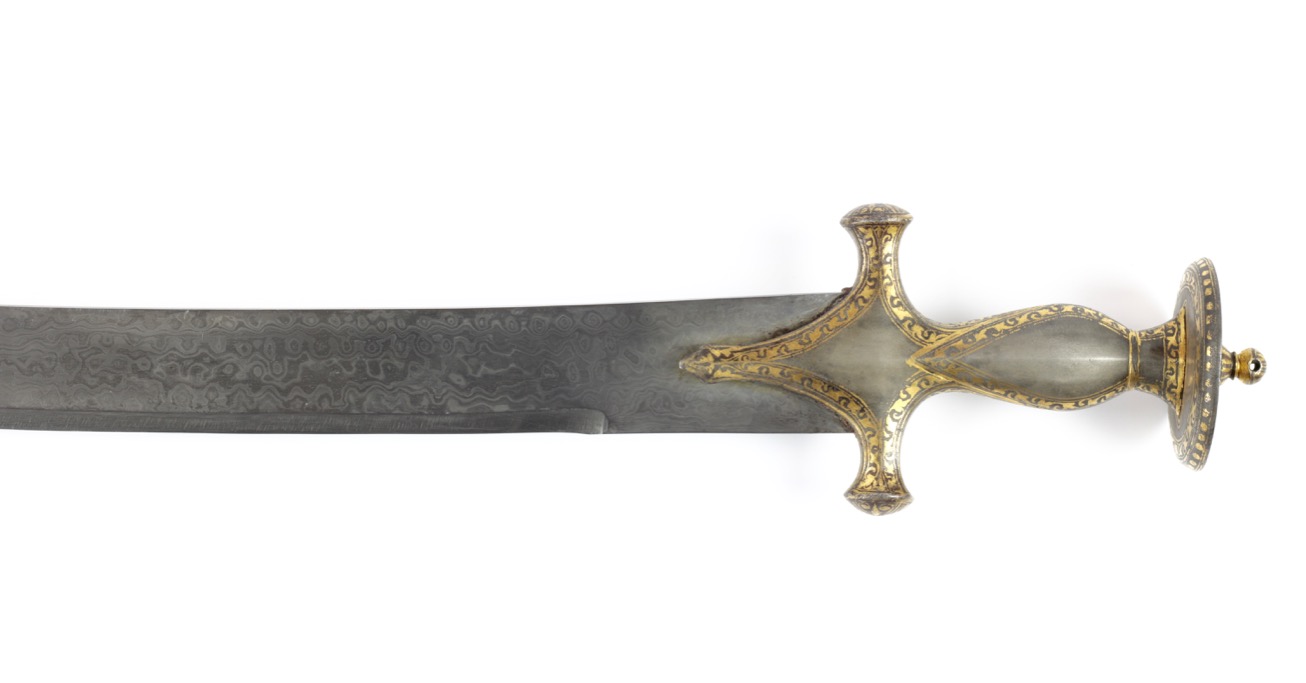
These mysterious weapons were already obsolete when the first ethnographers encountered them.
This peculiar sword was used by the Garo people of Assam for fighting, clearing the jungle, and animal…
Fine Indian kard with gilt copper alloy hilt, decorated with chiseled flowers.



